From the soil to the carafe, the art and the manner.
Every day of the year, the sugarcane is harvested based on the daily production requirements.
The small local growers, neighboring the Habitation, deliver their batches of sugarcane with different varieties to ensure a diversity of flavors.
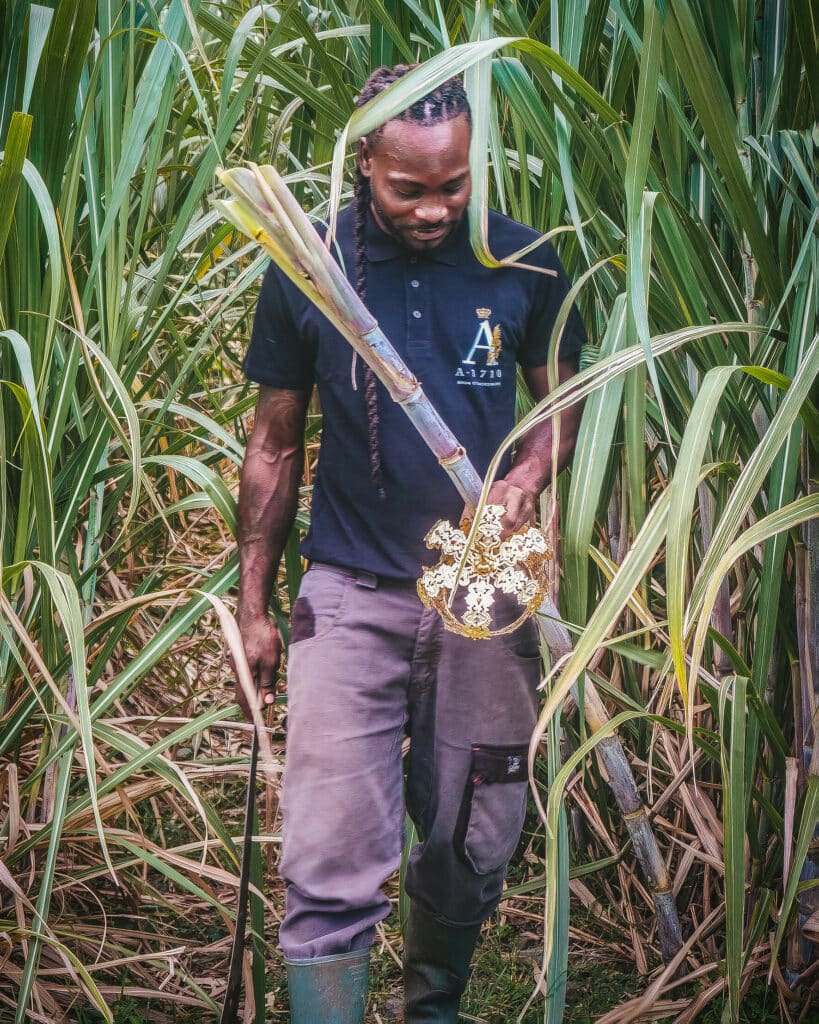
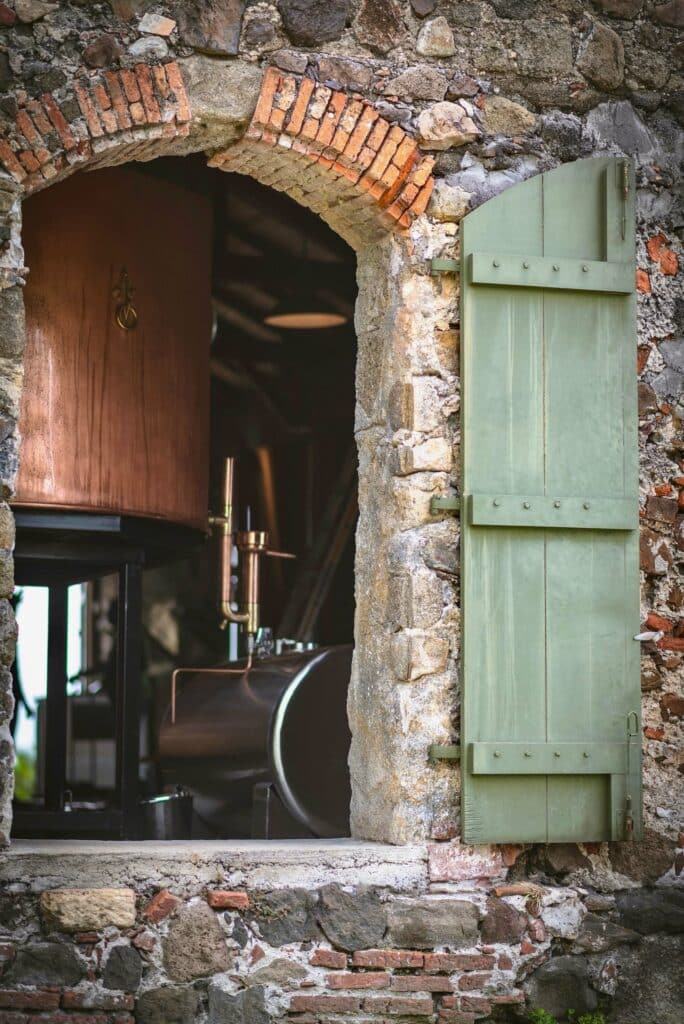
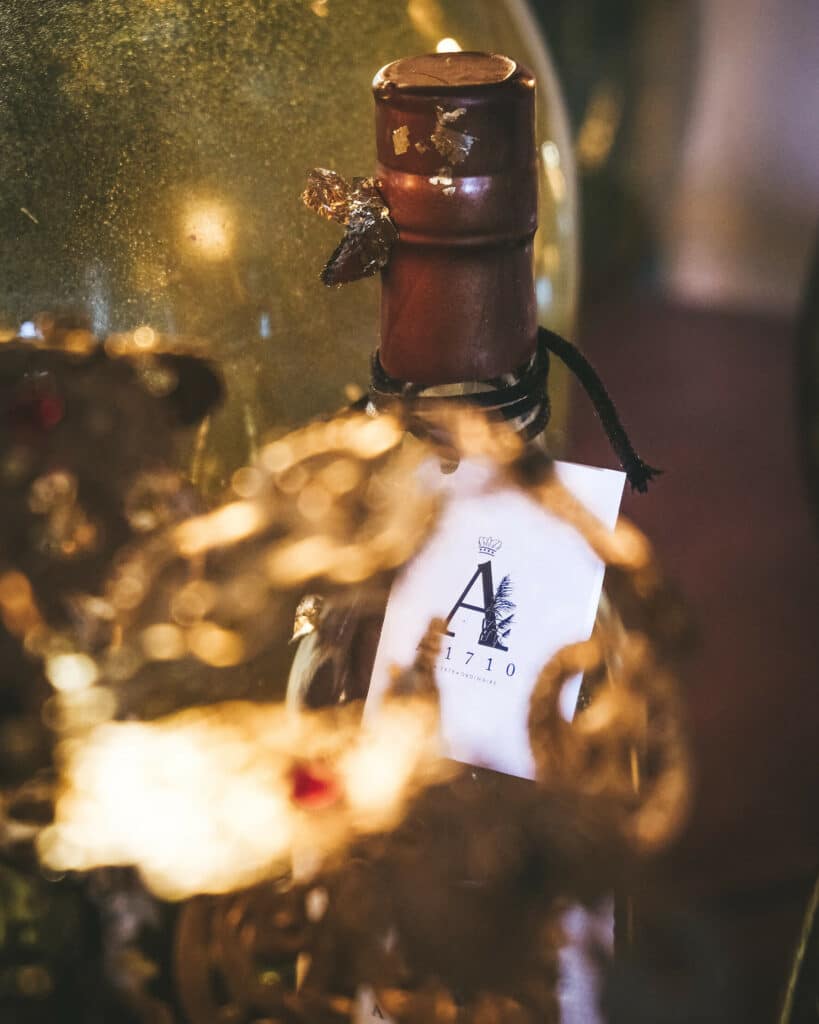
The art of harvesting
“We also cultivate our own sugarcane on-sit at Habitation du Simon. Due to the nature of the terrain and to ensure the preservation of cane quality, we employ manual cutting techniques. The harvesting is carried out by Andy, Julien, and other skilled individuals who have inherited their knowledge from the elders.”
“The act of cutting requires great concentration, precision, and fluidity in every movement. The gesture is precise and decisive, and once the sugarcane is cut, it is bundled together and transported to the mill, ready for pressing.”
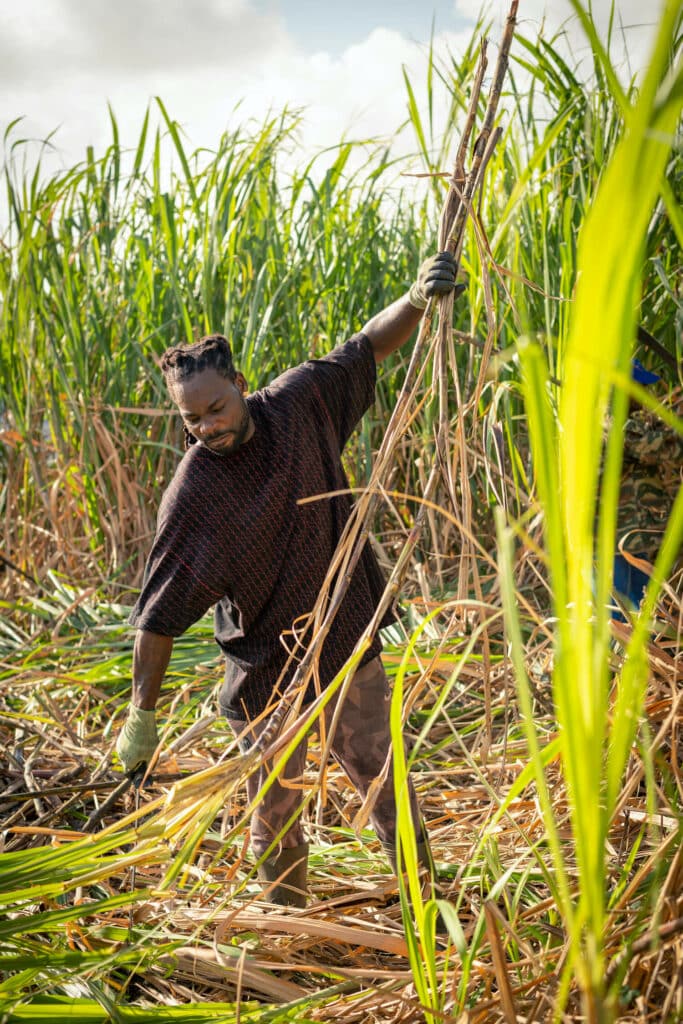
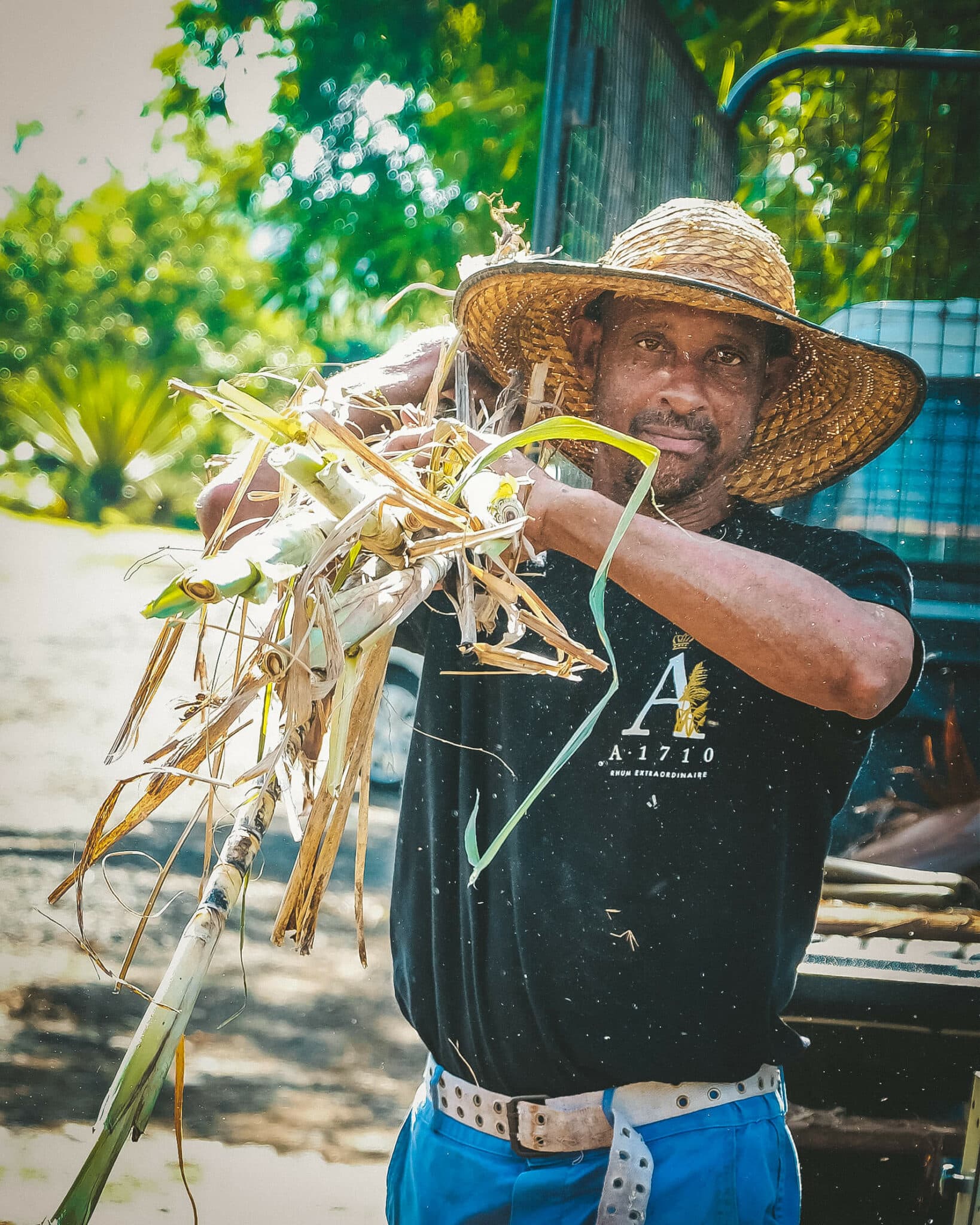
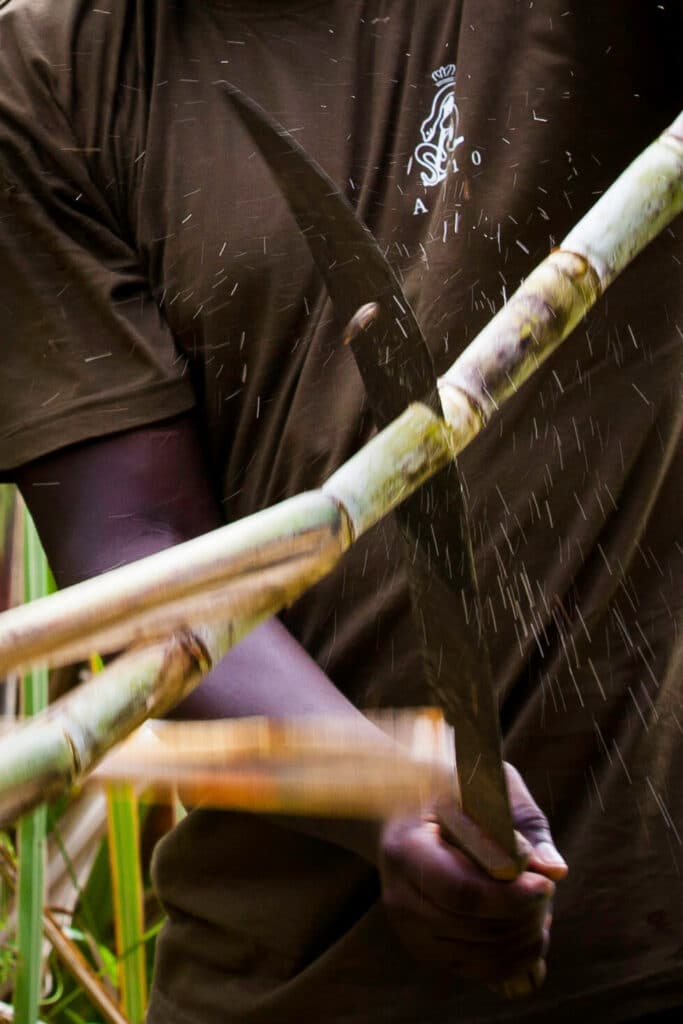
The cutting of sugarcane is a delicate art that requires precise movements and constant attention.
The pressing at the mill
The proximity of the facilities on-site allows for a reduced time between each step of the rum production. This is why the crushing process takes place immediately after the hand-cutting of the fresh sugarcane. Only one press is used to extract the nectar from the sugarcane juice. The result is a clean, ultra-fresh juice that invites tasting.
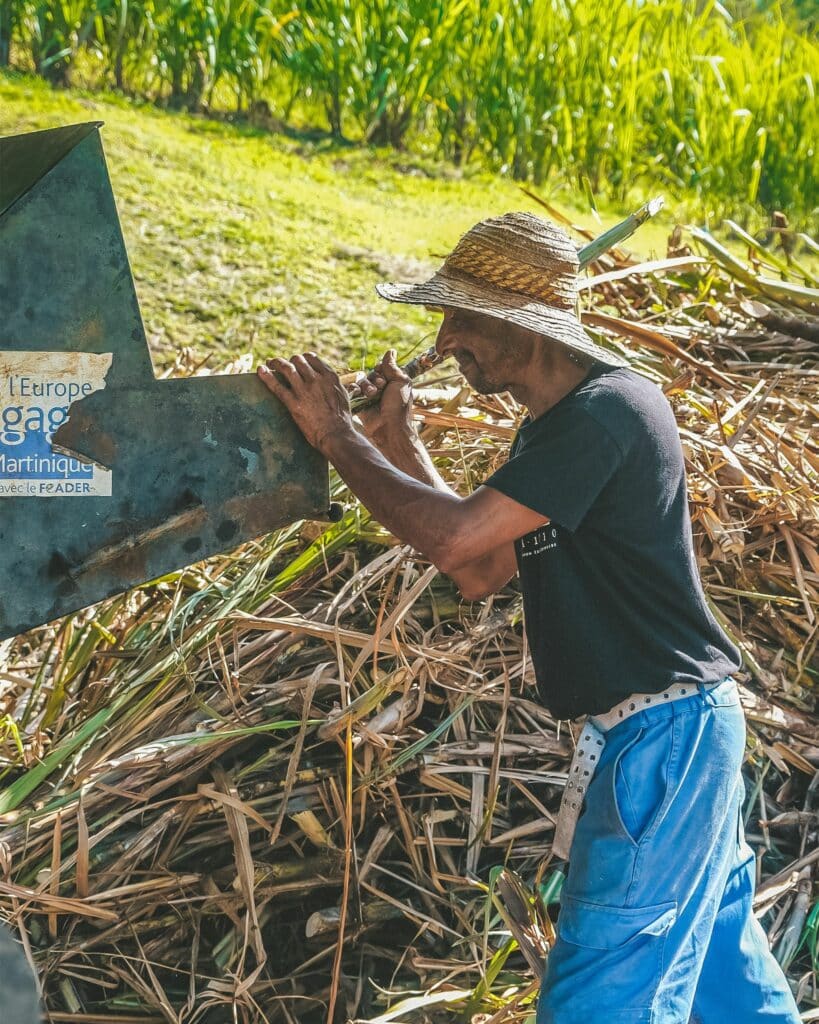
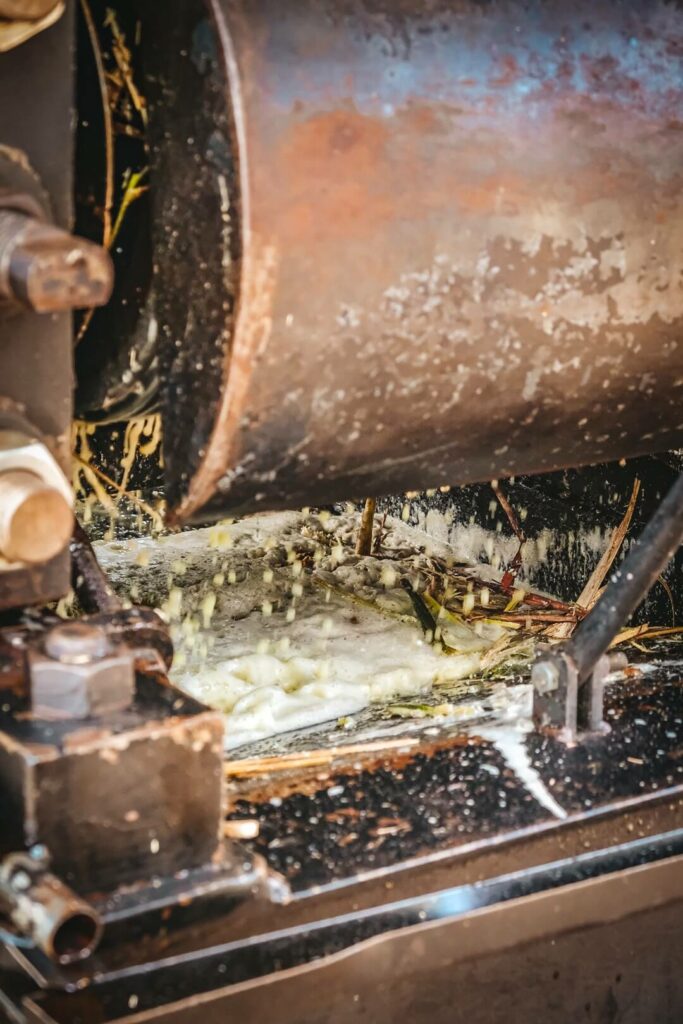
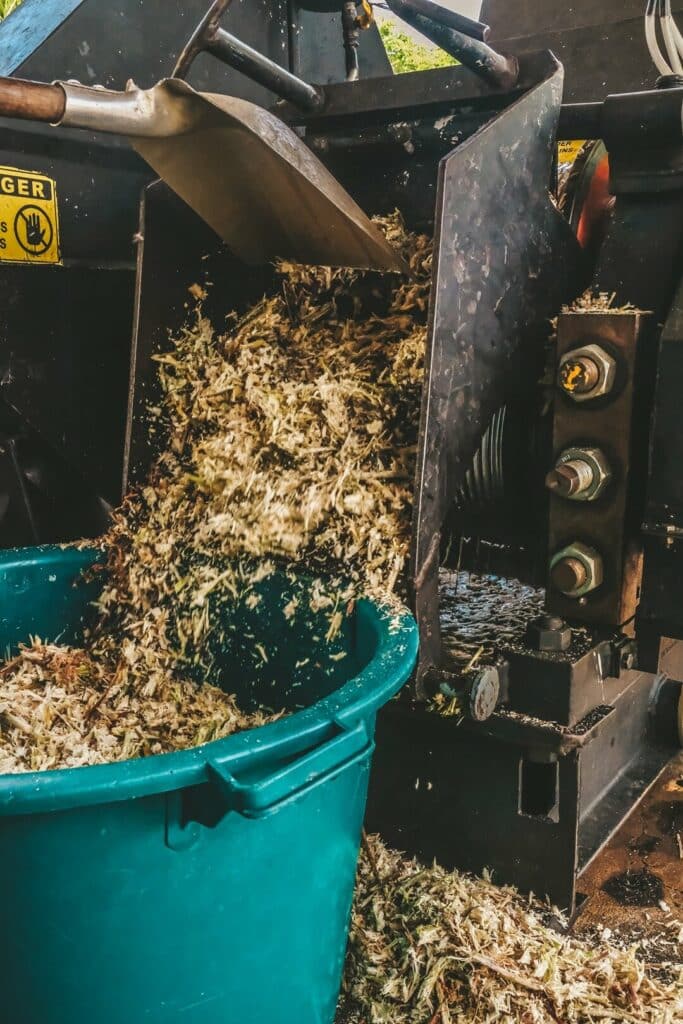
The fermentation process
Within a few hours of pressing, the juice is already fermented in stainless steel tanks, which are cooled to maintain the optimum temperature for each of the yeasts used.
Slow fermentation, lasting from 3 to 5 days, brings out the ethyl alcohol in the must, as well as a whole population of non-alcoholic markers (TNA) with the most subtle, enchanting aromas.
Thanks to the yeasts that will have consumed almost all the sugars present in the cane, a wine is obtained at the end of fermentation.
Cane wine contains between 5 and 10% pure alcohol, which is distilled in a still as in the days of the first rum-making in the West Indies in the 17th century.
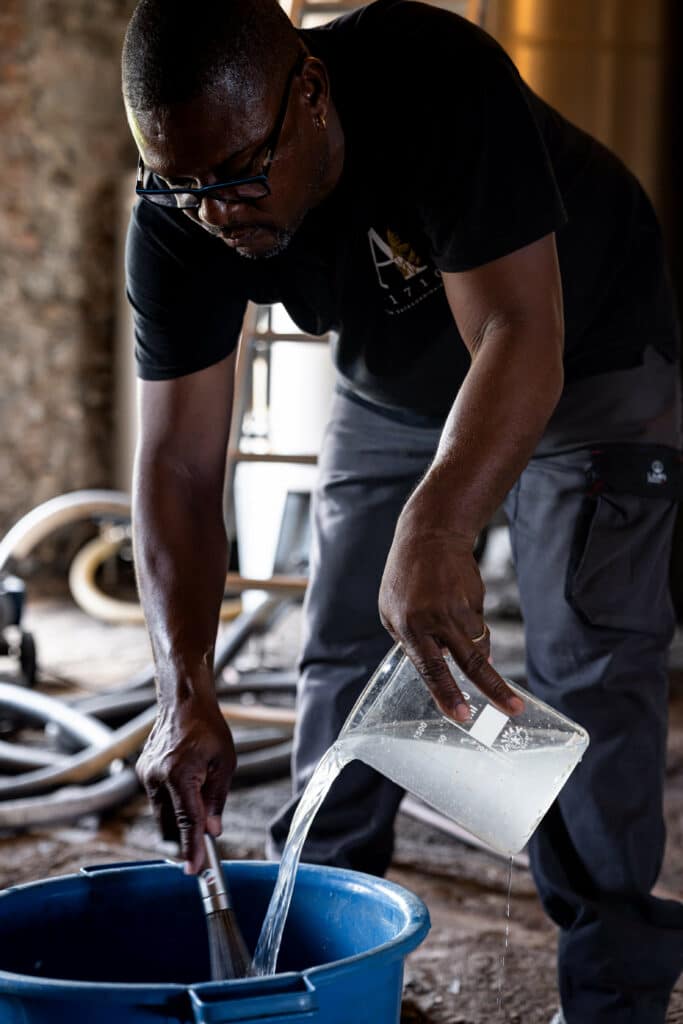
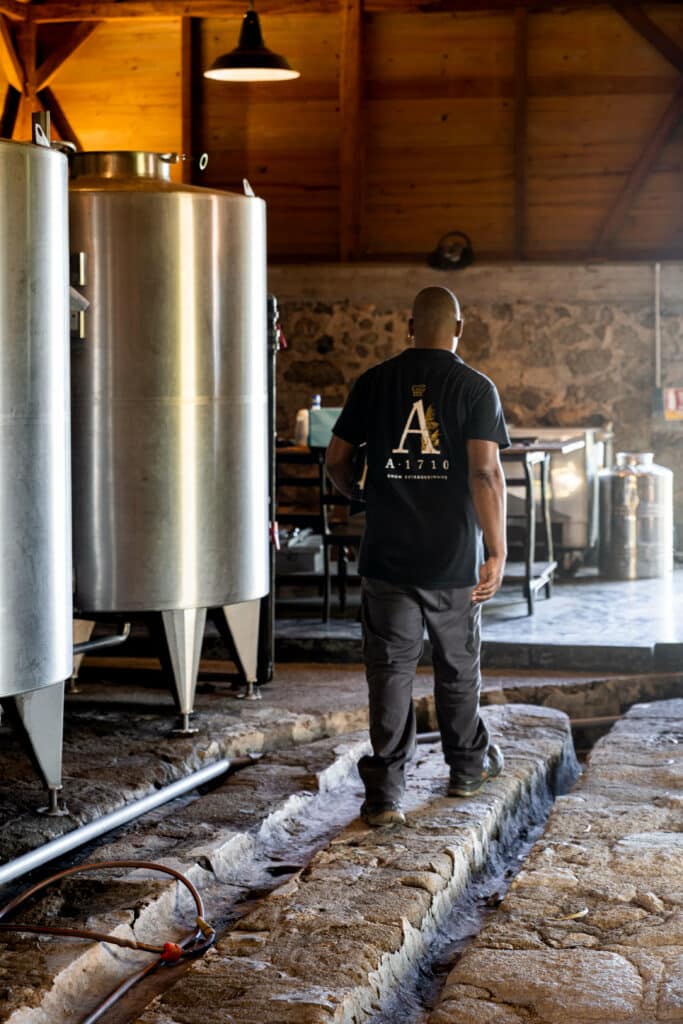
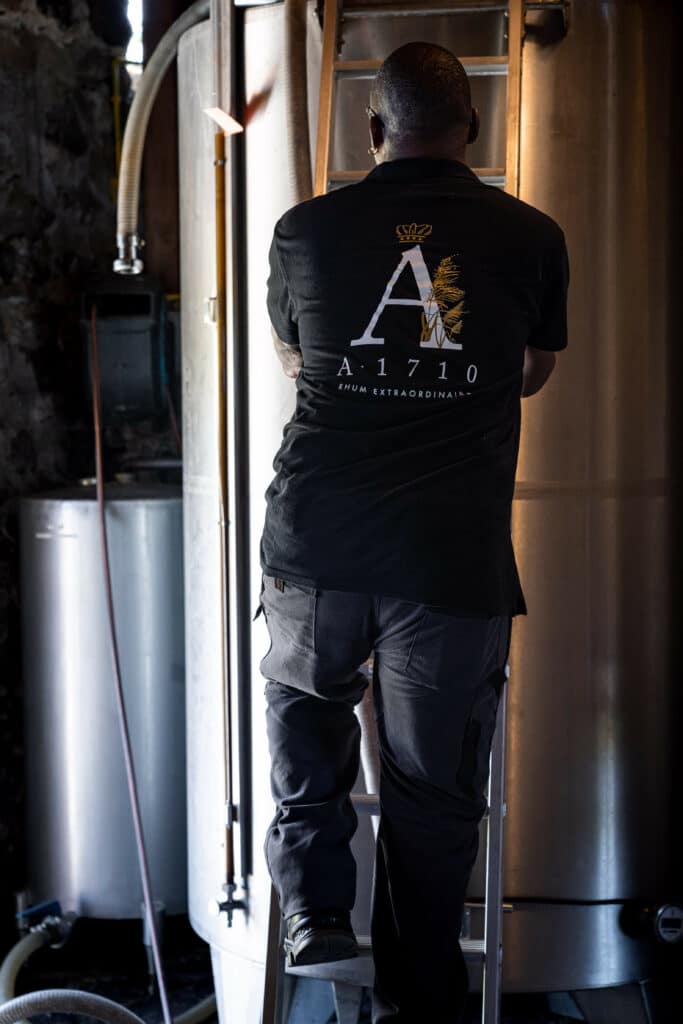
The distillation process
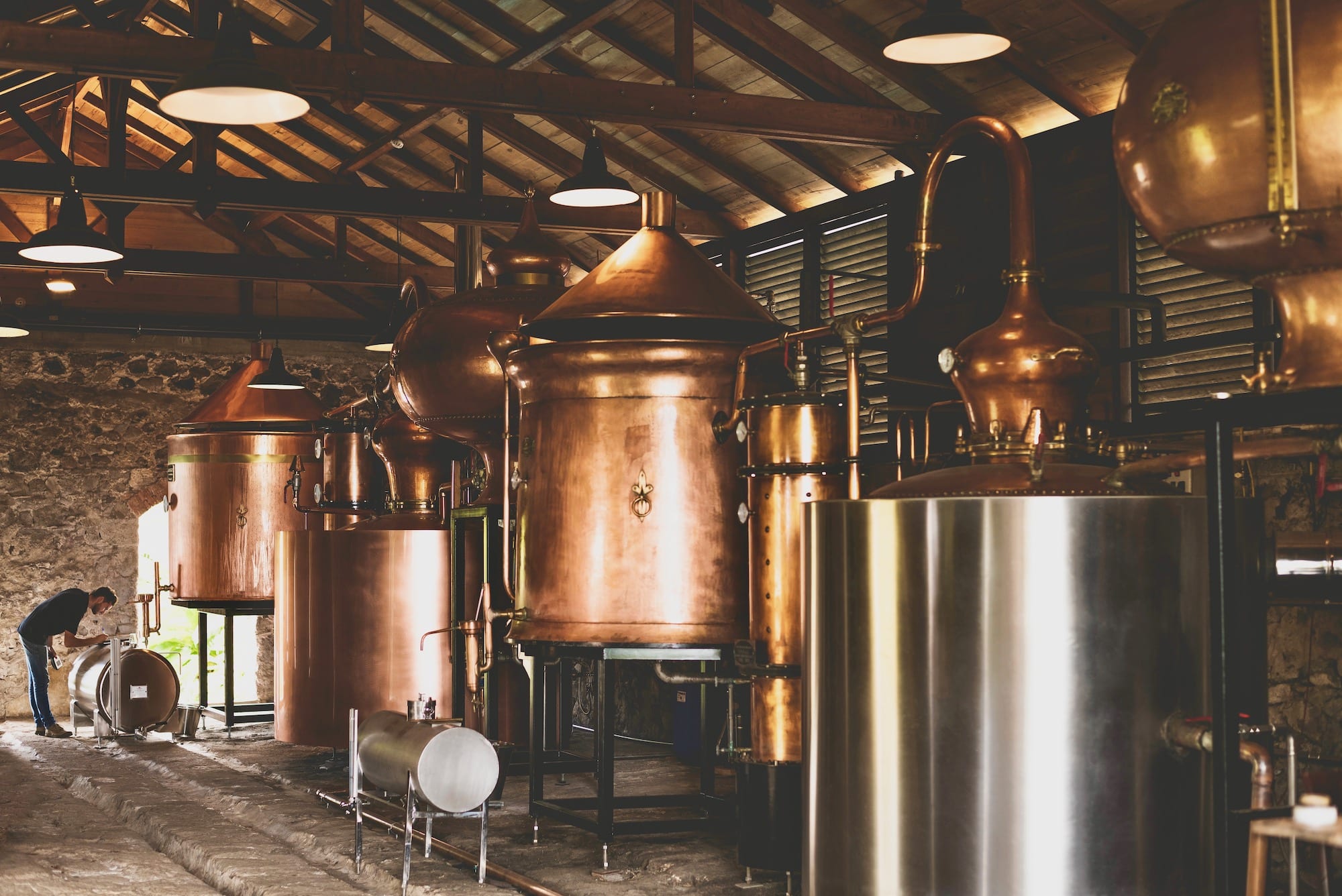
The A 1710 distillery has implemented a production process that combines traditional methods with the latest techniques.


The importance of copper
During distillation, the wine is heated with an open flame in the alembic pot. On boiling, the volatile compounds are drawn up above the wine. As they progress through the copper pot, the vapors are released from the water droplets.
As they pass through the 7-tray concentration column, the rectification process becomes more pronounced. The ethyl alcohol vapors are concentrated and loaded with volatile aromatic compounds before arriving in the condenser, where they are returned to a liquid state. During this long and delicate stage, the rum flows at a controlled 68% vol. The rum, both in gaseous and liquid states, will come into contact with copper apparatus. Copper is paramount
It’s the metal par excellence that enables the creation of aromatic components through the combination of the various aldehydes, esters and higher alcohols in the distillate. A noble ester amplifier familiar to all quality brandy producers.

The reduction
The most “delicate” final phase for all spirits is reduction to market alcohol content. A long, step-by-step reduction avoids “destabilizing” the rum, and allows better absorption of water into the alcoholic medium to preserve aromas. Once the desired strength is achieved, the product is left to rest for several months before being bottled.
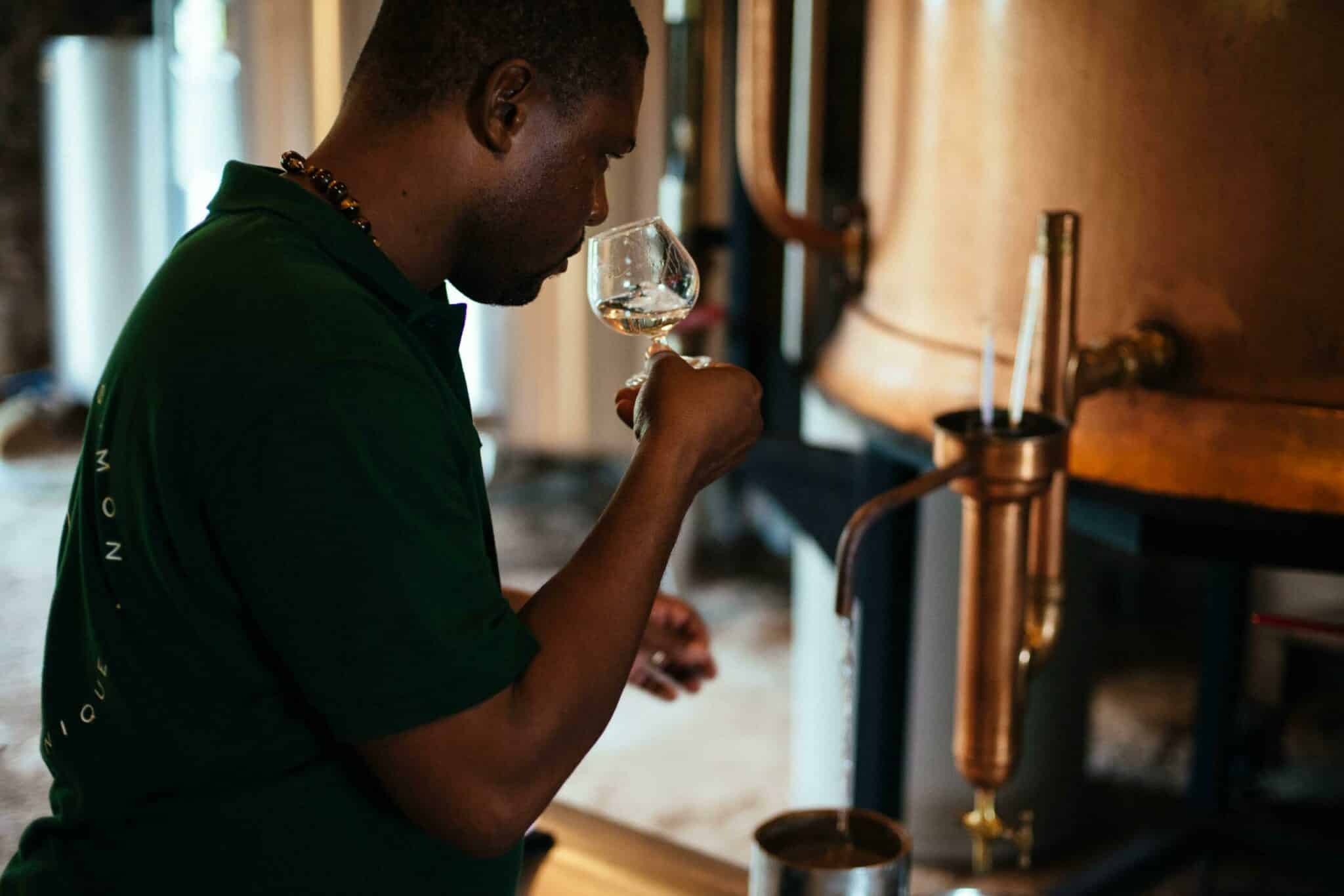
Hand-bottling
The hand-bottling process begins with Bénédicte, who sanitizes the bottle with rum. Once the container is prepared, Nadine takes her turn to pour our extraordinary rum into it. Then, Cédric cork it using a small mallet, and passes the bottle to Véronique, who dips the cork into warm wax, carefully chosen to match the vintage’s color.
Meanwhile, another team takes care of the labeling process, carefully attaching the collar, label, and back label one by one. They then proceed to tie a double ribbon around the neck of the bottle and insert a small hand-stamped and numbered card.
The old carafes, on the other hand, are individually stamped or engraved according to the vintages.
All these handcrafted finishes also allow us to have a final look at our creations before they leave Habitation du Simon. Each bottle is unique in our eyes.
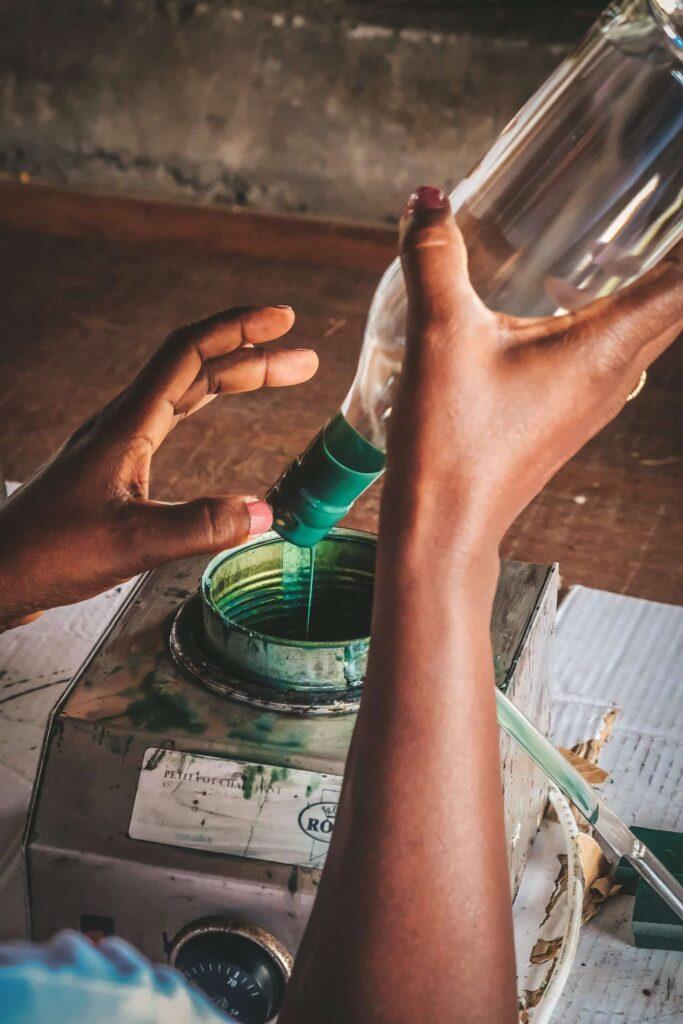

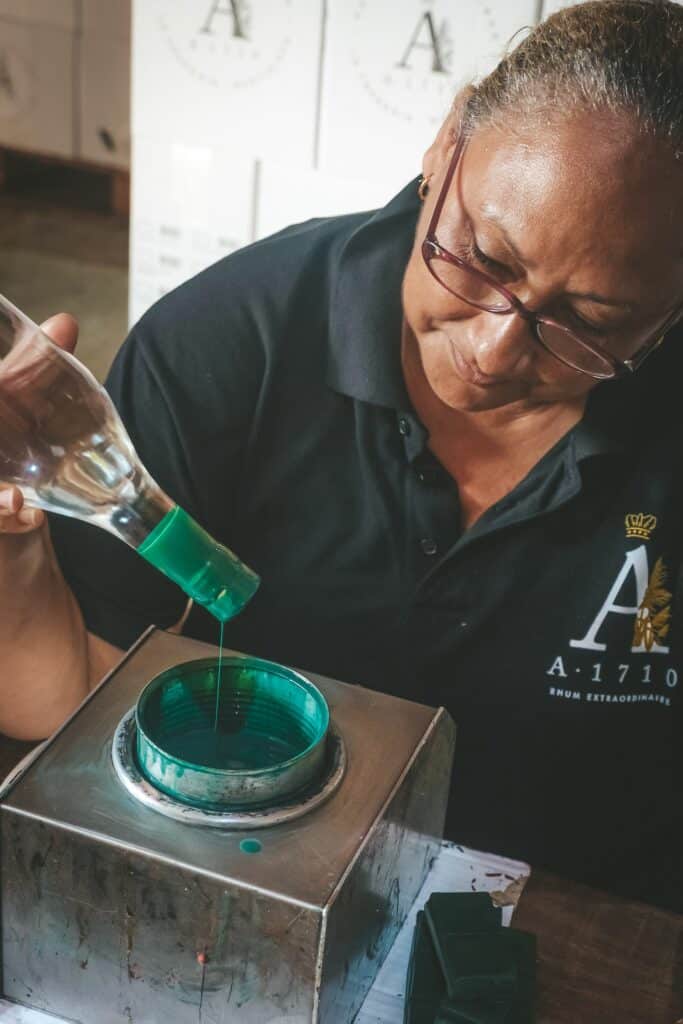
At the bottling workshop, the skilled hands coordinate in a ballet of precise and meticulous movements.
Our rums
A 1710 rums are entirely home-produced:
planting, crushing, distillation and bottling.